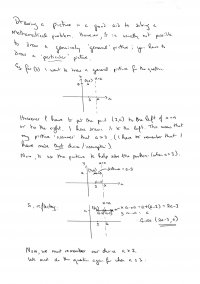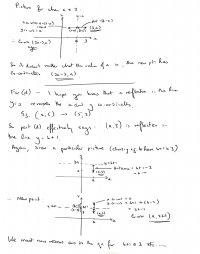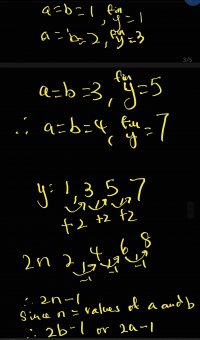Can anyone help me understand how to derive the answer for part (b) please?
I can now get the answer to (a) and (c) but can't get the answer to (b).
For (b), I plotted the points out with values of a from 1 to 6. I got the coordinates (-1,1), (1,2), (3,3), (5,4), (7,5), (9,6). I still don't get how to get the answer of (2a-3, a) from here. I can understand that the y coordinate always remains same as value of a. But I don't get how to obtain the x coordinate as an algebraic expression of 2a-3 from the values I just plotted out. Can anyone help?
I also don't know how to find the answer to part (d)... any suggestion how to go about doing that?
I can now get the answer to (a) and (c) but can't get the answer to (b).
For (b), I plotted the points out with values of a from 1 to 6. I got the coordinates (-1,1), (1,2), (3,3), (5,4), (7,5), (9,6). I still don't get how to get the answer of (2a-3, a) from here. I can understand that the y coordinate always remains same as value of a. But I don't get how to obtain the x coordinate as an algebraic expression of 2a-3 from the values I just plotted out. Can anyone help?
I also don't know how to find the answer to part (d)... any suggestion how to go about doing that?




